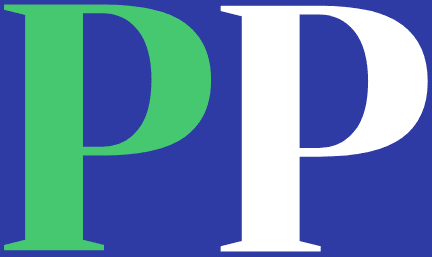Last updated Feb. 18, 2025 by Charles Zemub
The coronavirus pandemic, officially known as COVID-19, has undeniably brought about unprecedented challenges and transformations in various sectors worldwide. One sector that has been significantly impacted is the housing market, particularly in the realm of Home Equity Lines of Credit (HELOCs). As millions of people faced economic uncertainties, job losses, and health concerns, the ramifications on financial products such as HELOCs have been profound and multifaceted. This article will explore how the coronavirus crisis has affected HELOCs and what the future might hold for these financial instruments.
✓ Short Answer
The coronavirus crisis has led to stricter lending standards for HELOCs as lenders seek to reduce risk amidst economic uncertainty. Many financial institutions have suspended or significantly limited the issuance of new HELOCs, impacting homeowners’ ability to access home equity. With fluctuating home values and potential income instability, borrowers face challenges in managing existing HELOCs, prompting financial hardship programs in some cases.
Understanding HELOCs
A Home Equity Line of Credit (HELOC) is a revolving line of credit secured by the borrower’s home. It allows homeowners to borrow against the equity they have built in their property, up to a pre-set limit. Importantly, HELOCs are generally used for home improvements, debt consolidation, or other substantial expenses. The flexibility to draw funds as needed, combined with generally lower interest rates than other forms of credit like credit cards, makes HELOCs an attractive option for homeowners. However, this very nature also exposes borrowers to risks, particularly during economic downturns.
The Initial Impact of the Pandemic on HELOCs
Changes in Lending Standards
As COVID-19 spread rapidly across the globe, it instigated a wave of economic shutdowns, which subsequently led to skyrocketing unemployment rates. In response to these economic uncertainties, lenders began tightening credit standards. Many major banks and financial institutions imposed stricter criteria on HELOC approvals, such as higher credit score requirements and lower loan-to-value ratios. Some lenders went a step further, suspending new HELOC offerings altogether. This shift was driven by a desire to mitigate risk and manage potential defaults as homeowners’ financial circumstances became increasingly unstable.
Suspension and Reduction of HELOCs
By mid-2020, several large banks had already halted HELOC disbursements. Bank of America, for instance, halted HELOC applications in early April 2020, while Wells Fargo followed suit in May 2020. This broad suspension significantly limited options for homeowners seeking to tap into their home equity, particularly those trying to weather financial storms brought about by the pandemic.
Home Equity and House Prices
Fluctuations in Home Valuations
One primary aspect influencing HELOCs is the value of homes, which experienced an unpredictable trajectory during the pandemic. Initial concerns about a market crash were quickly replaced by unexpected booms in certain areas. Low-interest rates and a desire for more space as people worked from home prompted a surge in home buying. This home-buying frenzy led to increased property values in many areas, which theoretically would make HELOCs more attractive.
Regional Variations
The impact of COVID-19 on real estate prices was not uniform. While suburban and rural areas saw home values increase significantly, urban areas, especially large cities, faced the opposite trend as people relocated away from densely populated regions. This disparity also influenced HELOC availability and attractiveness, with those in rising property markets potentially benefiting more from home equity access than those in declining ones.
Borrower Challenges During the Pandemic
Financial Instability
Borrowers faced daunting financial instability due to job losses, reduced income, and unexpected health expenses. Those with existing HELOCs had to confront the challenge of managing debt obligations amidst uncertain income streams. Lenders often responded by offering hardship assistance programs, including deferment options and interest rate reductions.
Impact on Credit Scores
Financial hardships due to the pandemic led to increased defaults in various types of loans, affecting consumers’ credit scores. A decrease in creditworthiness further constrained homeowners’ ability to secure or renegotiate HELOCs, adding to the financial distress experienced by many during this period.
Increased Debt Burdens
Some borrowers, finding themselves unable to manage pre-existing HELOC debts due to the economic crisis, accumulated further debt instead of capitalizing on their home equity. The consequences of this have included spiraling into more severe financial distress enough to potentially put their homes at risk.
The Future of HELOCs Post-Pandemic
Evolving Lending Practices
As economies gradually recover and stabilize post-pandemic, lenders may slowly ease stringent HELOC lending standards. However, the pandemic has underscored the importance of prudent lending and risk management, and thus, some level of caution is likely to persist.
Technological Innovations
The pandemic accelerated digital transformation across the financial services sector, and HELOC providers are adopting innovative technologies to improve customer service and streamline credit processes. These innovations could offer a safer, more accessible path to home equity for consumers, facilitating quicker application processes and more robust risk assessment capabilities.
Potential Regulatory Changes
The pandemic may prompt new regulations designed to safeguard both borrowers and lenders in times of crisis. These could include mandated hardship options, improved consumer protections against foreclosure, and guidance on maintaining home equity responsibly.
Conclusion
The coronavirus crisis significantly affected the landscape of HELOCs, underscoring the inherent vulnerabilities in relying on home equity during economic downturns. As lenders and borrowers navigate this challenging environment, adaptations in lending practices, technology, and regulatory oversight are crucial for fostering a resilient housing credit market. Understanding these impacts and the future implications will be key for homeowners considering HELOCs as a financial tool in a post-pandemic world.
FAQs
Q: What is a HELOC?
A: A Home Equity Line of Credit (HELOC) is a flexible line of credit that allows homeowners to borrow against the equity of their home, usually at variable interest rates.
Q: How did COVID-19 initially impact HELOC availability?
A: Many lenders tightened credit standards, suspended new HELOC applications, or reduced credit limits to mitigate risk due to financial uncertainties induced by the pandemic.
Q: Did home values generally increase or decrease during the pandemic?
A: Home values experienced regional fluctuations; suburban and rural areas saw increases, while urban centers experienced declines due to shifts in living preferences.
Q: What challenges did borrowers face regarding HELOCs during the pandemic?
A: Borrowers faced financial instability, impacting their ability to manage existing HELOC debts, and a high demand for hardship and deferment programs emerged.
Q: How might HELOC availability change post-pandemic?
A: Lending practices may slowly relax as the economy stabilizes, but future HELOC offerings will likely maintain some level of cautious risk management.
Q: Could new regulations concerning HELOCs emerge post-pandemic?
A: Yes, potential regulatory changes may focus on increased consumer protections and guidelines to enhance the resilience of home equity lending in future crises.



